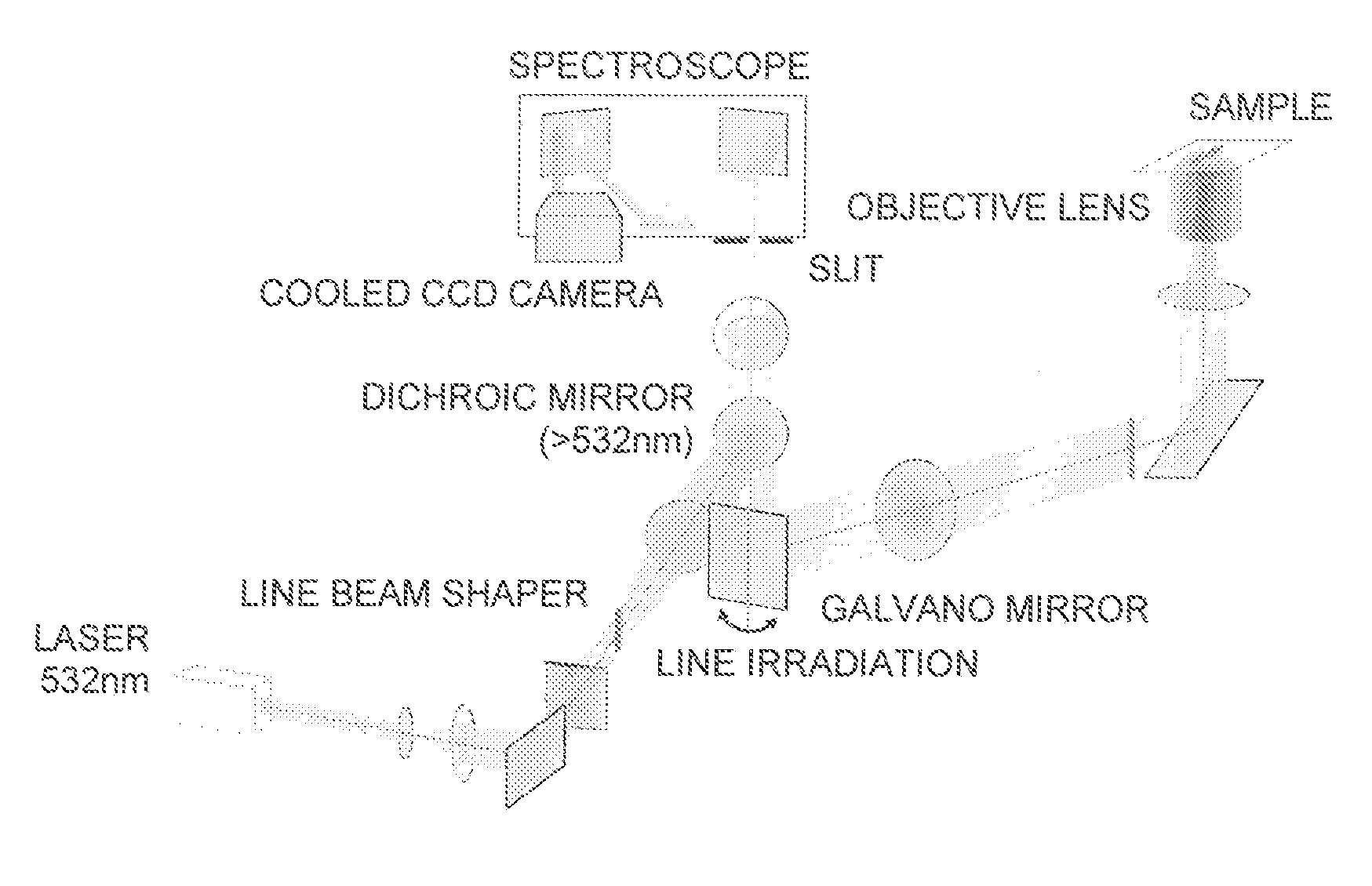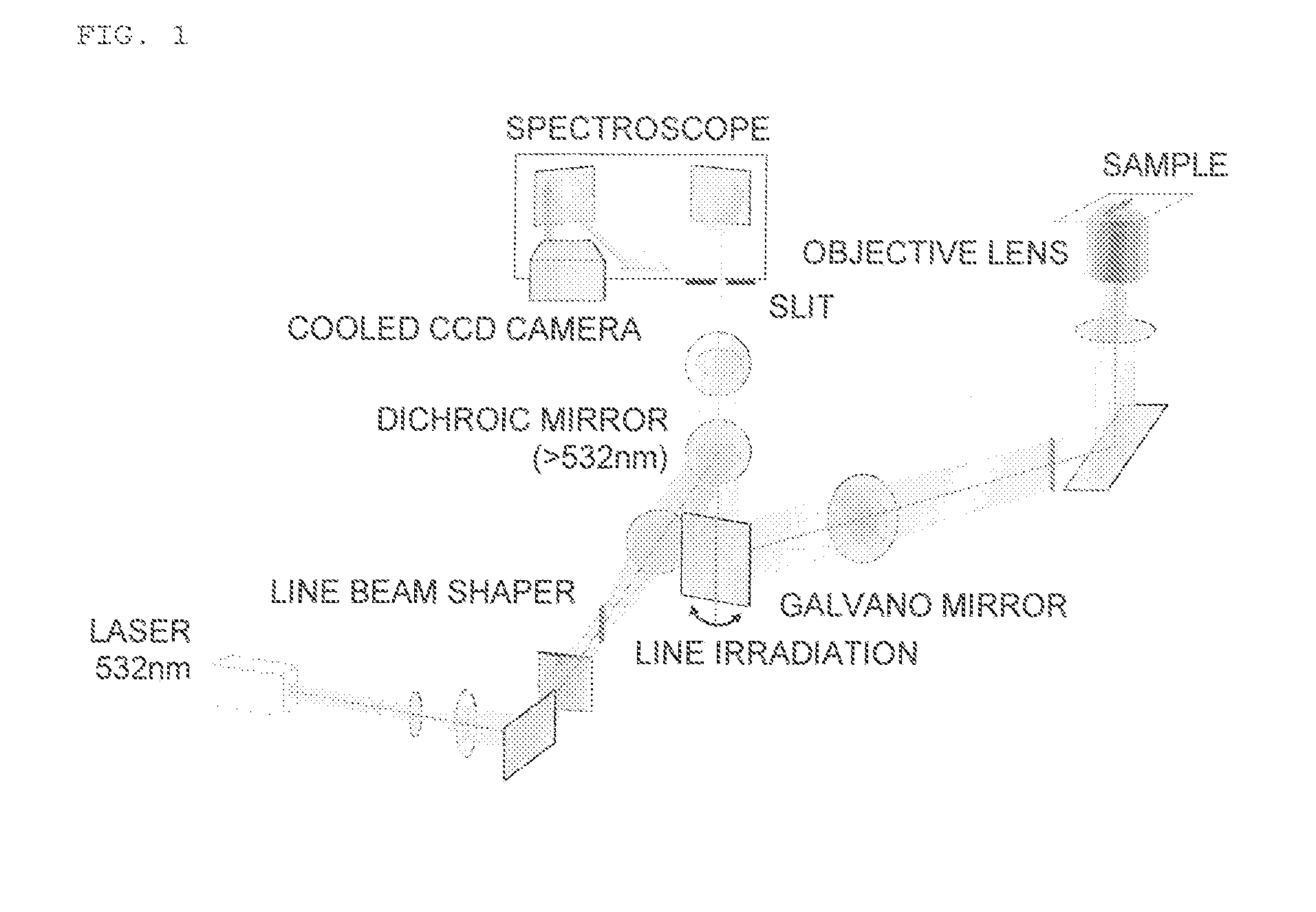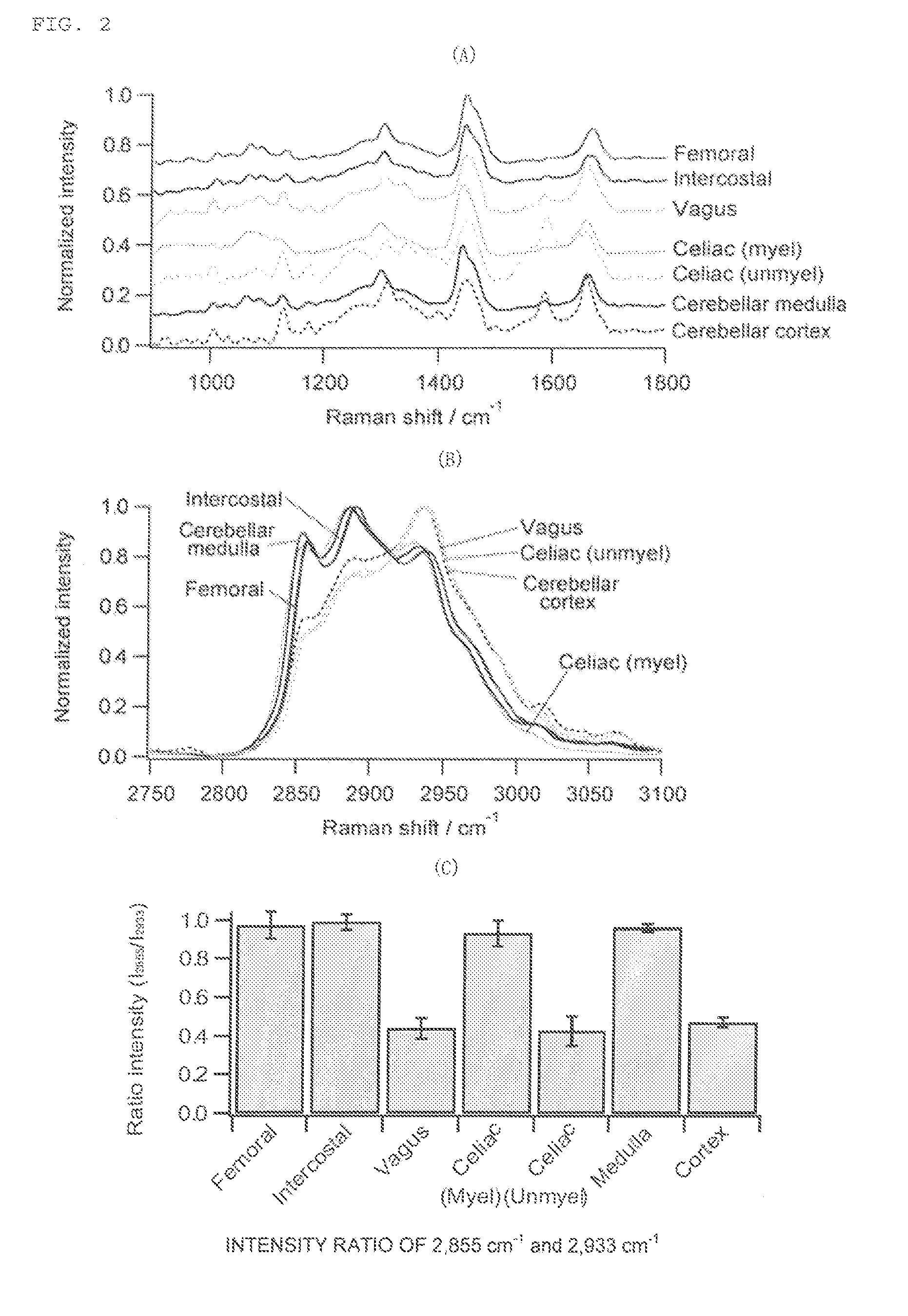Method for nerve detection by raman scattering spectroscopy
a raman scattering and nerve technology, applied in the field of nerve detection, can solve the problems of unrealized comprehensive detection of nerves, difficult to use staining for observation during operations, and difficult to apply this measurement to unmyelinated nerves lacking a myelin sheath, etc., and achieve the effect of suppressing the degradation of qol after the operation caused by nervous disorder
- Summary
- Abstract
- Description
- Claims
- Application Information
AI Technical Summary
Benefits of technology
Problems solved by technology
Method used
Image
Examples
example 1
General View of Experimental Device and Experimental Method
[0082]FIG. 1 illustrates a general view of an experimental device.
[0083]Slit-scanning Raman scattering microscope: RAMAN-11, manufactured by Nanophoton Corporation
[0084]Cooled CCD camera: Pixis 400 BR, manufactured by Princeton Instruments, −70° C., 1,340×400 pixels
[0085]Objective lens: UPLSAPO, manufacturedby Olympus Corporation, x60, NA=1.2
[0086]Experimental Method[0087](1) Tissue Sample
[0088]Rat Tissue
[0089]A healthy Wistar rat was euthanized by an overdose of an anesthetic, and each tissue was obtained.
[0090]Chest tissue containing intercostal nerves, tissue in the vicinity of the esophagus containing vagus nerves, femoral nerves and surrounding tissue thereof, celiac plexus, cerebellum
[0091]Type: Wister rat
[0092]Age: Young-adult (8-10 weekly age)
[0093]Human Tissue
[0094]The periprostatic tissue of a patient who has undergone radical prostatectomy was obtained. The tissue containing a vagus nerve gastric branch of a patie...
example 2
Distinguishing Nerves and Surrounding Tissue Thereof Based on Intensity Ratio
[0110]Raman spectra of myelinated nerves, unmyelinated nerves, connective tissue, fat tissue, muscle tissue (striated muscle), and blood vessels (media) were obtained, and whether or not there was a significant difference in intensity ratio in each Raman shift was investigated.
[0111]Method of calculating intensity ratio
Iratio=Iω2Iω1[Math.2]
Iratio: Intensity ratio between Iω1 and Iω2
Iω1: Raman scattering light intensity at Raman shift ω1 (left axis in the figure)
Iω2: Raman scattering light intensity at Raman shift ω2 (lower axis in the figure)
[0112]Method of Calculating Significant Difference
[0113]The intensity ratio calculated by the above-mentioned equation was measured at a plurality of points of two kinds of tissues (“connective tissue vs myelinated nerves”, etc. described in an upper part of the figure), and the two kinds of measurement groups were subjected to statistical analysis by a t-test to calcu...
example 3
Raman Spectrum by 671 nm Excitation
[0121]In order to show that nerves can be detected at various wavelengths, a Raman spectrum at an excitation optical wavelength of 671 nm was measured (FIG. 14). For reference, FIG. 15 shows the measurement result at an excitation optical wavelength of 532 nm.
[0122]A Raman spectrum that was substantially the same as that at 532 nm was also obtained at each spectrum. From this, it is considered that nerves can be detected similarly at various wavelengths.
PUM
| Property | Measurement | Unit |
|---|---|---|
| wavelength | aaaaa | aaaaa |
| wavelength | aaaaa | aaaaa |
| wavelength | aaaaa | aaaaa |
Abstract
Description
Claims
Application Information
 Login to View More
Login to View More - R&D
- Intellectual Property
- Life Sciences
- Materials
- Tech Scout
- Unparalleled Data Quality
- Higher Quality Content
- 60% Fewer Hallucinations
Browse by: Latest US Patents, China's latest patents, Technical Efficacy Thesaurus, Application Domain, Technology Topic, Popular Technical Reports.
© 2025 PatSnap. All rights reserved.Legal|Privacy policy|Modern Slavery Act Transparency Statement|Sitemap|About US| Contact US: help@patsnap.com



